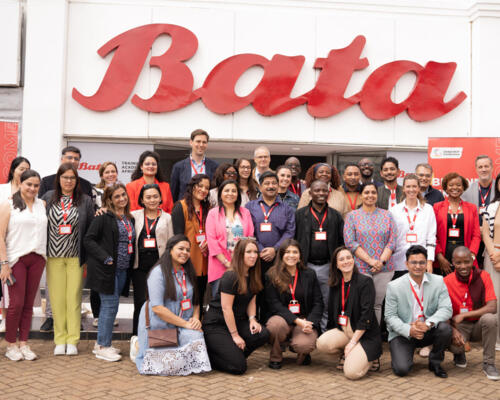Our Impact
Building a sustainable future
OUR KPIs
-
Percentage of women in managerial and supervisory positions (%)
Definition
The percentage of women in managerial and supervisory positions is an indicator of the diversity and equality in an organization’s management. Bata wants to provide opportunities for the advancement of women in the company.
Actions may include, but are not limited to:
- Training and development (equal opportunity of career advancement for women and men)
- Recruitment and retention of women
- Development of the organization’s current pipeline of female professional staff from which to draw on for promotions to the managerial level
- Providing equal wages and opportunities for advancement in the workforce
Measurement
We measure the total number of managerial and supervisory positions and the number of women in managerial and supervisory positions in manufacturing facilities, stores, and offices at the end of each quarter.
-
Number of hours of volunteering for the Bata Children’s Program
Definition
The Bata Children’s Program is a volunteer-led initiative launched in 2010 which strives to help disadvantaged children in the communities in which Bata operates. The Bata Children’s Program’s approach is to tackle children’s global concerns locally by involving Bata branches and Bata employees as volunteers. Bata fosters a unique corporate culture of service, where employees are encouraged to play an active role in making the community safer, stronger, and in developing innovative places in which to live and work.
Measurement
We measure the total amount of hours of volunteering in the country by the Bata Children’s Program volunteers against the number of employees in the factories, offices and stores at the end of the quarter.
-
Number of accidents
Definition
Among labor practices and decent work performance indicators, occupational health and safety are also part of Bata’s main concerns. Occupational safety may be associated to the rates of injury, occupational diseases, lost days, absenteeism, and number of work-related fatalities in the organization. According to the International Labor Organization, a work accident is a "discrete occurrence in the course of work, which leads to physical or mental harm."
Measurement
We measure the number of accidents in manufacturing facilities each quarter. These are considered as:
- Acute poisoning
- Wilful acts of other persons
- Accidents on premises or public places and means of transport during a journey in the course of work.
We use an external global partner to perform simultaneous audits with a guaranteed level of expertise in group standard and local laws.
-
Volume of water withdrawal (m3)
Definition
Clean freshwater is becoming increasingly scarce, and this can pose a threat to production processes that rely on large volumes of water. A systematic effort to monitor and optimize the water consumption efficiency can reduce general water related costs as well as lessen the risk posed by a potential disruption of water supplies or the sudden rise in water prices. In regions where water sources are highly restricted, the company water consumption patterns can also influence relations with other stakeholders.
Measurement
We measure the total volume of water withdrawal during the quarter within the manufacturing facilities.
-
Amount of solid waste generated (kg)
Definition
Waste is defined as any material purchased anywhere in the supply chain that does not ultimately end up as a useful component of the product. Reducing waste generation, reuse and/or recycling avoid the need for landfills or incineration, and therefore save natural resources and prevent the emissions of the corresponding greenhouse gas and other pollutants.
Waste generation figures over several years can indicate the level of progress the organization has made towards waste reduction efforts. It can also indicate potential improvements in process efficiency and productivity. From a financial perspective, the reduction of waste contributes directly to lower the costs for material, processing, and disposal.
Measurement
We measure the total amount of solid waste generated by the manufacturing facilities during the quarter.


